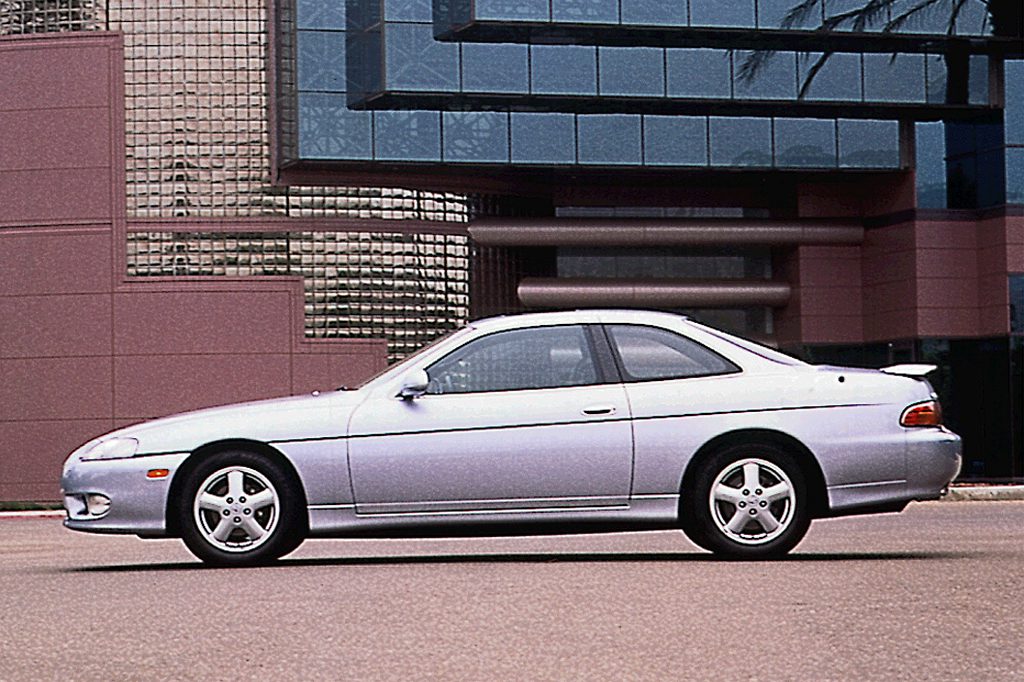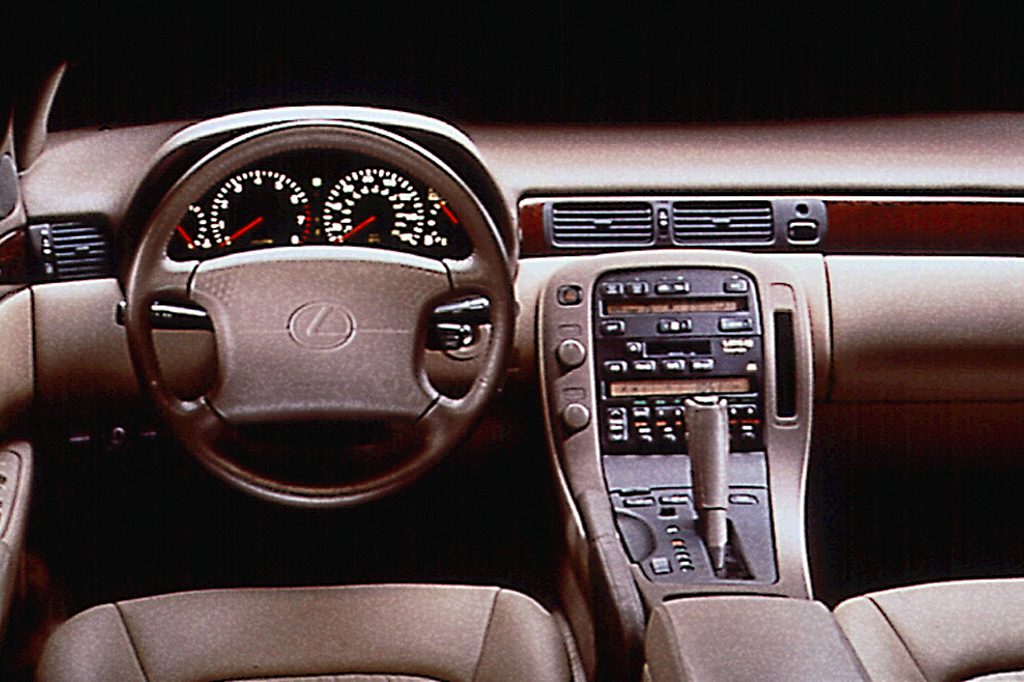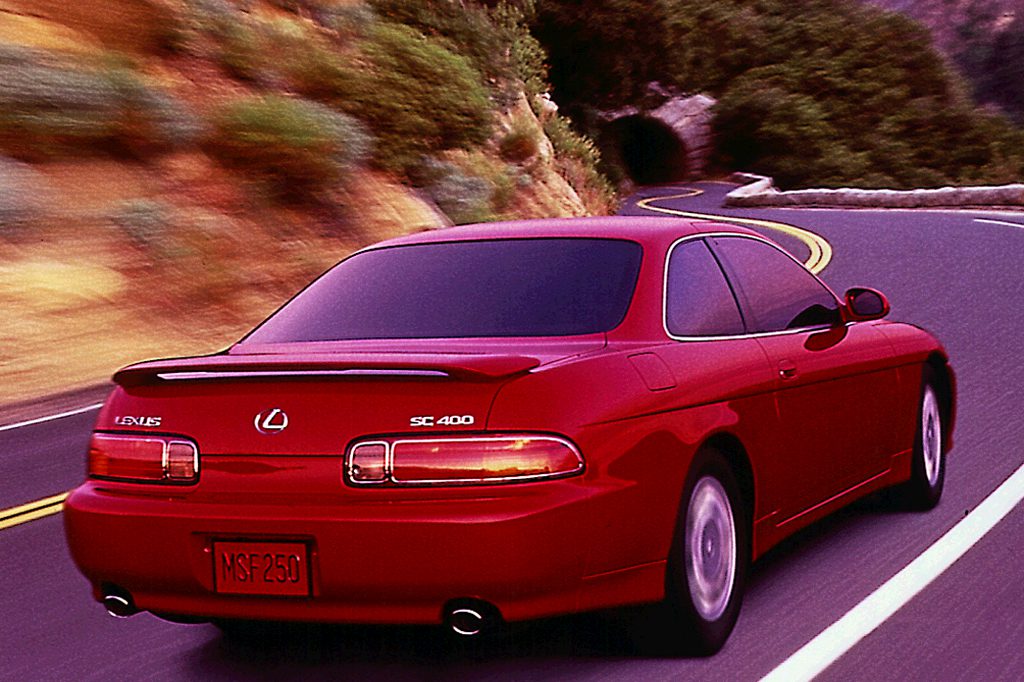| Premium sporty/performance car; Built in Japan |
|
|
| Good condition price range: $1,900 – $9,000* |

1998 Lexus SC 400

1998 Lexus SC 300

1994 Lexus SC 400

1993 Lexus SC 400 interior

1997 Lexus SC 400
| Pros: |
|
| Cons: |
|
Undeniably expensive even with many years of service behind them, these coupes nevertheless rank near the top of our list of luxury sport models.
Overview
Launched in June 1991, this premium rear-drive 2-door coupe from Toyota’s luxury division carried a 4.0-liter V8 and 4-speed automatic transmission. An SC 300, with inline 6-cylinder engine, joined in June 1992. Both had a 2+2 notchback body, but front-end styling differed slightly and the SC 300 had fewer standard features. The SC 300’s 3.0-liter engine developed 225 horsepower, and came with 5-speed manual shift (automatic optional). Antilock all-disc brakes and a driver-side airbag were standard.
Yearly Updates
| 1993 SC 300/400 A passenger-side airbag went into 1993 coupes, joining the driver’s airbag. A new automatic headlamp on/off system included a lamps-on warning. |
| 1994 SC 300/400 Adoption of CFC-free refrigerant for the standard air conditioning was the only change for 1994. |
| 1995 SC 300/400 Grilles, taillamps, and alloy wheels are new. The SC 300 adopted 16-inch tires, matching the SC 400. Both models got structural refinements to meet the stricter 1997 federal side-impact standards. |
| 1996 SC 300/400 A new V8 engine went into the SC 400, borrowed from the latest LS 400 sedan. It produced 10 more horsepower (now 260) and 10 extra pound-feet of torque. |
| 1997 SC 300/400 More aggressive-looking exterior trim and softer seats marked the ’97 coupes. The passenger airbag moved to the top of the dashboard, and a trip computer was added. |
| 1998 SC 300/400 Both engines were revised. The V8 gained 40 horsepower and 30 pound-feet of torque, courtesy of Variable Valve Timing. The 6-cylinder engine added 10 pound-feet of torque. A 5-speed automatic transmission went into the SC 400, with a gate for manual shifting. No more manual-shift SC 300s were produced. |
| 1999 SC 300/400 Daytime running lights were installed, perforated leather trim went on seats and steering wheels, and a new 6-disc CD autochanger became standard in ’99. |
| 2000 SC 300/400 One new paint color became available, and new perforated leather upholstery was installed. SC took the ’01 model year off, reappearing in all-new from in ’02. |
